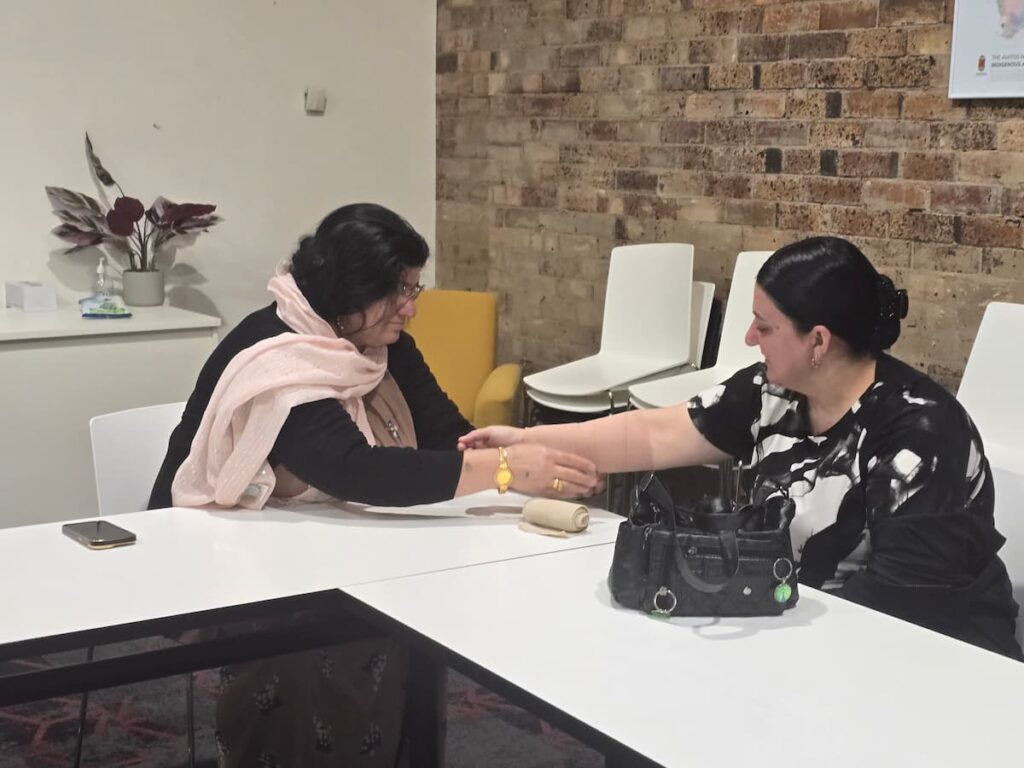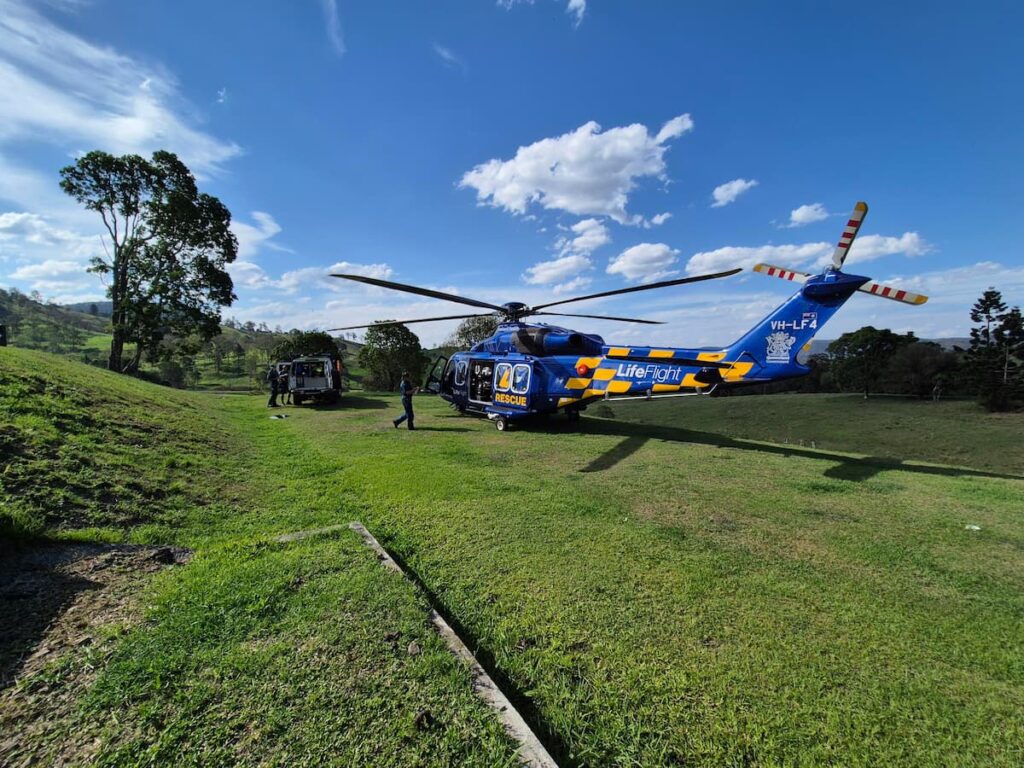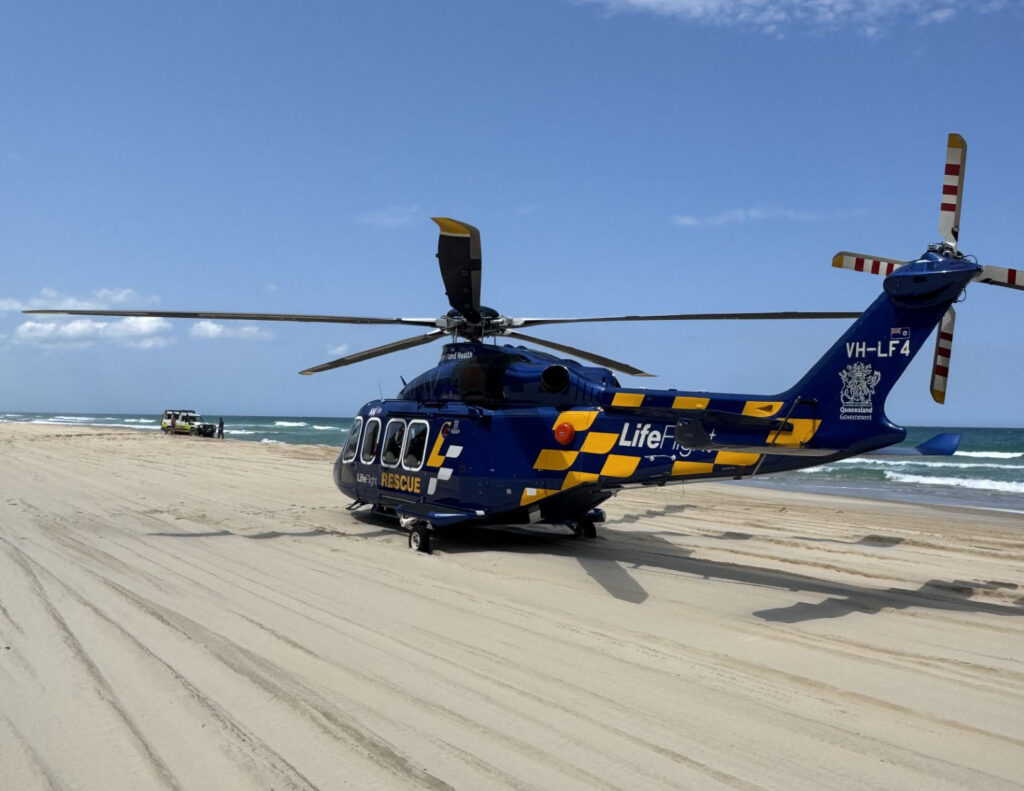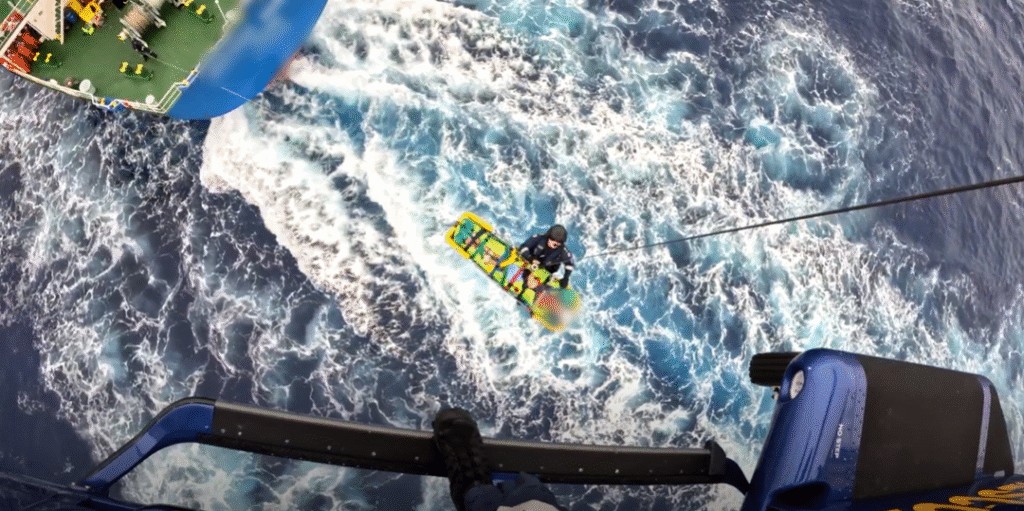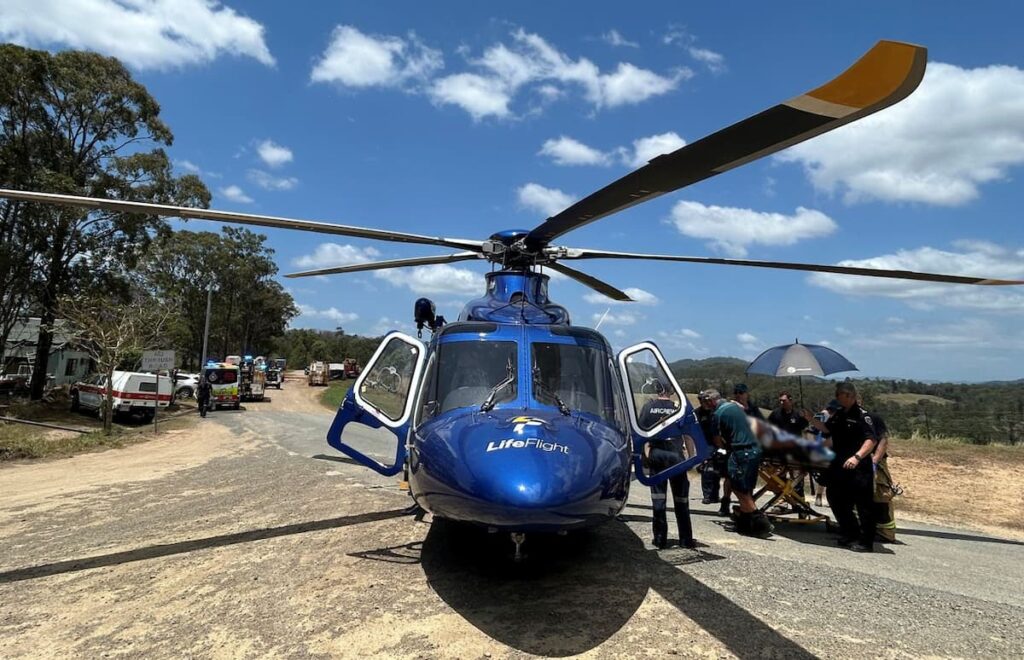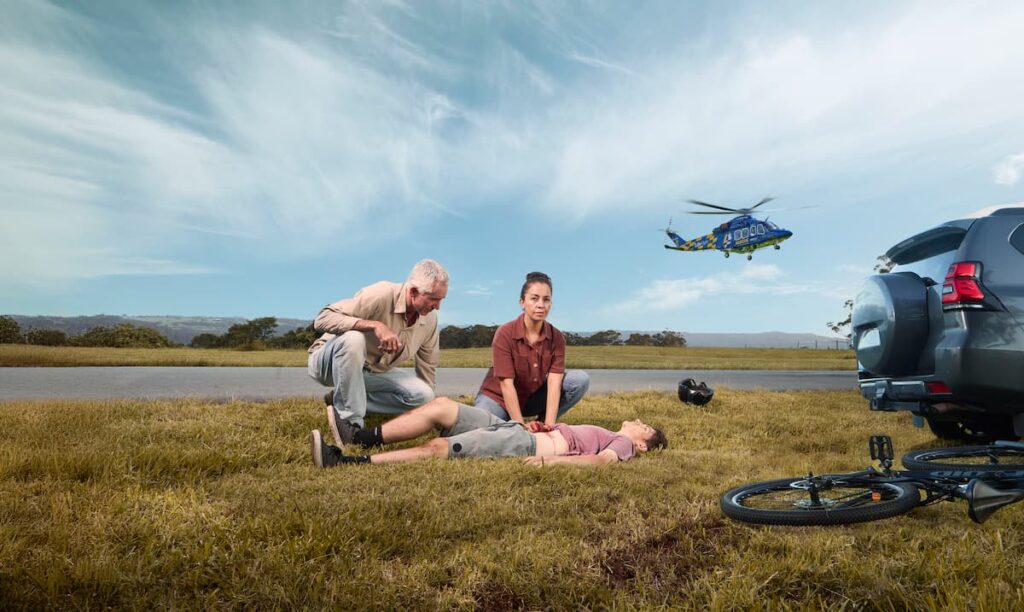In January 2013, ex-tropical Cyclone Oswald left a trail of destruction along the Queensland coast.
The devastating weather system hit the Wide Bay-Burnett region on Australia Day, starting with a cluster of tornadoes hitting coastal towns, followed by eight days of unprecedented flooding.
Rescue helicopters made the difference between life and death for hundreds of people. Caught by fast-rising floodwaters, many were trapped in their homes, on roofs, in their cars and in trees.
Their only escape would be by air.
RACQ LifeFlight Rescue (then known as Careflight) sent four rescue helicopters and two air ambulance Learjets to the region, to join the aeromedical rescue effort. The operation was the largest of its kind in Queensland history.
Now a LifeFlight executive, Brian Guthrie was a Chief Aircrew Officer onboard one of the choppers and said the extent of the floods was unimaginable.
“Thirteen years in the army, flying in East Timor and other emergencies, still didn’t prepare me for the scale of the flood disaster in Bundaberg.”
“When we hit Bundaberg airspace it was shocking, unrecognisable. Dirty brown water stretched as far you could see, with tiny little islands of land and the roofs of homes just visible.”
“There was a fair bit of silence in the cockpit at that moment.”
“It was a lot worse than what we’d seen on television and even though we have all worked in flood rescues it was still very confronting.”
During that time, the four RACQ LifeFlight Rescue helicopters winched five people to safety and airlifted more than 200 residents to higher ground, in two days.
“I really felt for these people, forced to leave their homes with so little. Their whole world was in a bag. They didn’t know what had happened to their homes and they were travelling into more uncertainty,” said Brian.
“Despite all this, they could still smile and thank us. They were amazing.”
Bundaberg RACQ LifeFlight Aircrew Officer John Kennedy was already operating in the flood zone.
As AGL Action Rescue (operated by Sunshine Coast Helicopter Rescue Service, which merged and became part of the RACQ Lifeflight Rescue helicopter service) Base Manager, he was helping coordinate the rescue activity, from what is the current RACQ LifeFlight Rescue helicopter hangar in Bundaberg.
He was also on the frontline, in a chopper, first at Pacific Haven.
“We were here the day the floodwater started to rise,” he said.
“The inundation to those properties was just…it was awful.”
“We went down to pick up a gentleman who wasn’t in a good way. He was trapped in his home. He was bed-ridden and couldn’t get out of his bed and the water was lapping at the mattress he was lying on.”
“We winched one of our rescue crewmen into that location. He waded through some water, gave us an update on the patient’s condition. The paramedic talked to him – made sure everything was good. Then we had a fairly long discussion about how we were going to extricate him from that location.”
A second helicopter from the rescue service was called in and the man was moved into the water, then winched to safety, as the floodwaters continued to rise.
For Brian Guthrie, it was also a rescue on the first day, which will be etched in his mind forever.
“We hit the ground running that day immediately flying to North Bundaberg for two winch rescues, airlifting five people from their flooded homes. That included a heavily pregnant Helen Smith, her husband Dan and their 15-month-old son James,” he said.
“I’ll never forget the expression on that little boy’s face or Helen’s words of thanks.”
The dramatic winch rescues and the people they helped, will never be forgotten, but the supportive spirit of the community resonated with both rescuers.
“The generosity of the Bundaberg people knew no limits. Lois Donovan from Argyle Garden Village heard we were coming to the city to help. She offered us rooms, other people brought in air beds. It was such a significant gesture as there were at least 30 crew members,” said Brian.
“I couldn’t help but think how the big-heartedness of Bundaberg people reminded me of our supporters. Your donations have allowed us to fly to the aid of the sick and injured for 40 years.”
“This is an example of why I’m committed to RACQ LifeFlight Rescue. It also shows in the level of support we receive from our generous donors, which makes this work possible.”
John Kennedy, a Bundy local for more than 30 years, is pleased to see his city recovered and moving on.
“There is some good that has come out of it. It was so hard on so many people, but there’s also some sense now of moving on, like the building of the new Multiplex which is great for the city, but will also be a shelter in times of natural disaster,” he said.
John and the Bundaberg RACQ LifeFlight Rescue crew hope for the best, but are always ready for the worst, 24 hours a day, seven days a week.
“I think people are appreciative of having a rescue helicopter service available when it’s needed. When there’s an emergency, when they are hurt or sick, or in a major disaster,” he said
“When we go to an event now, people say to us about the floods ‘you did a great job’”.





